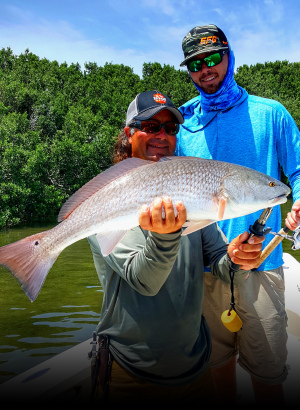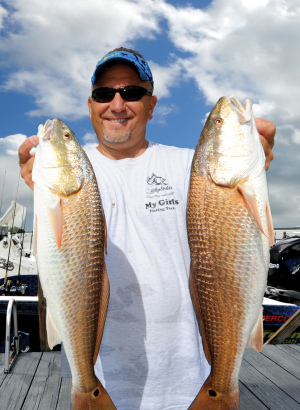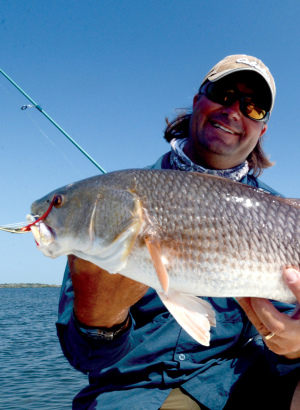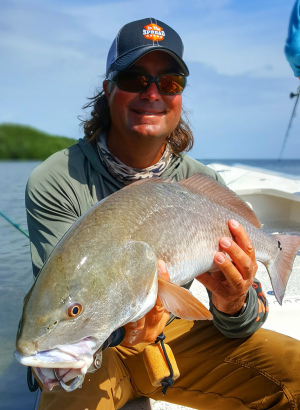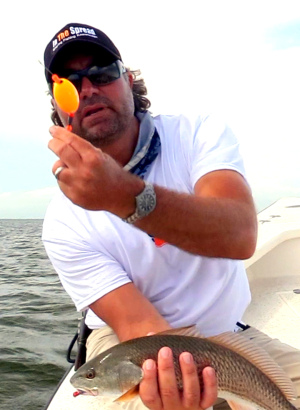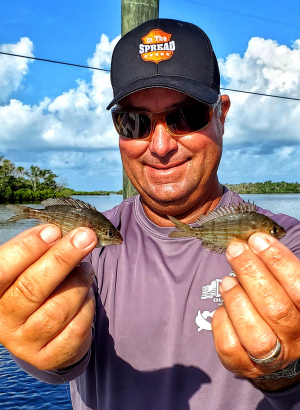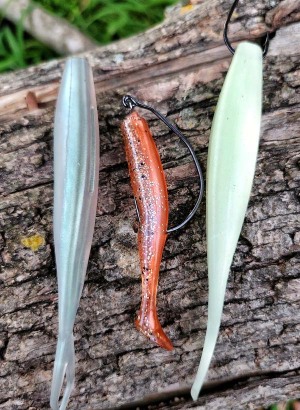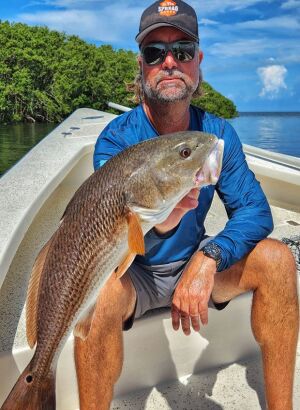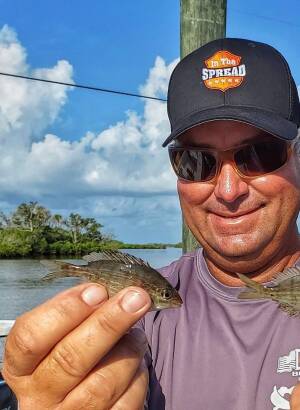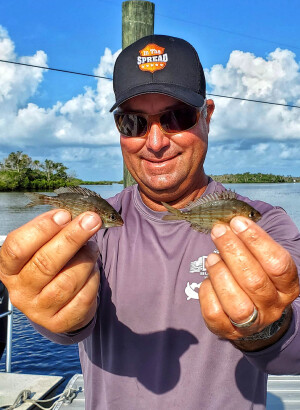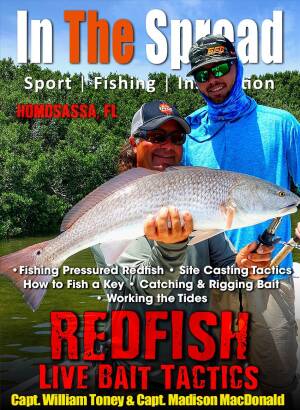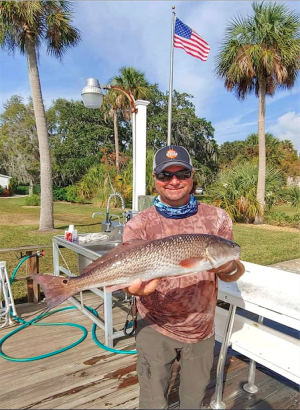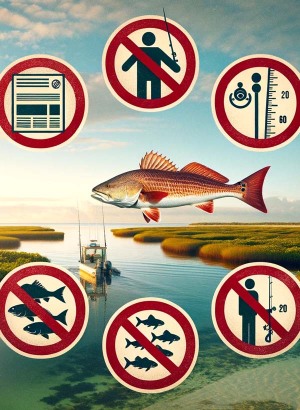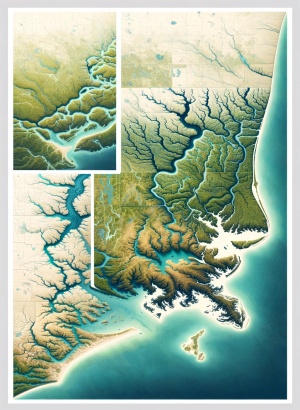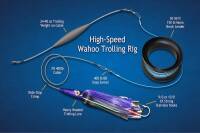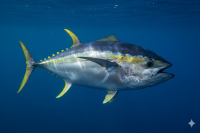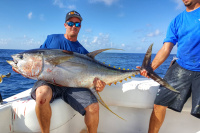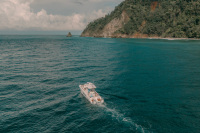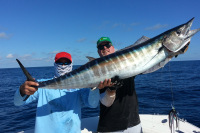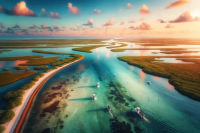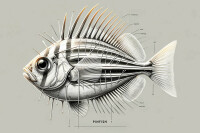Professional Florida Gulf Coast captain reveals proven summer redfish techniques for 85°F+ water conditions. Learn heat management strategies, optimal timing windows, and location selection that consistently produce 10-20 fish per trip during challenging summer months when other species shut down.
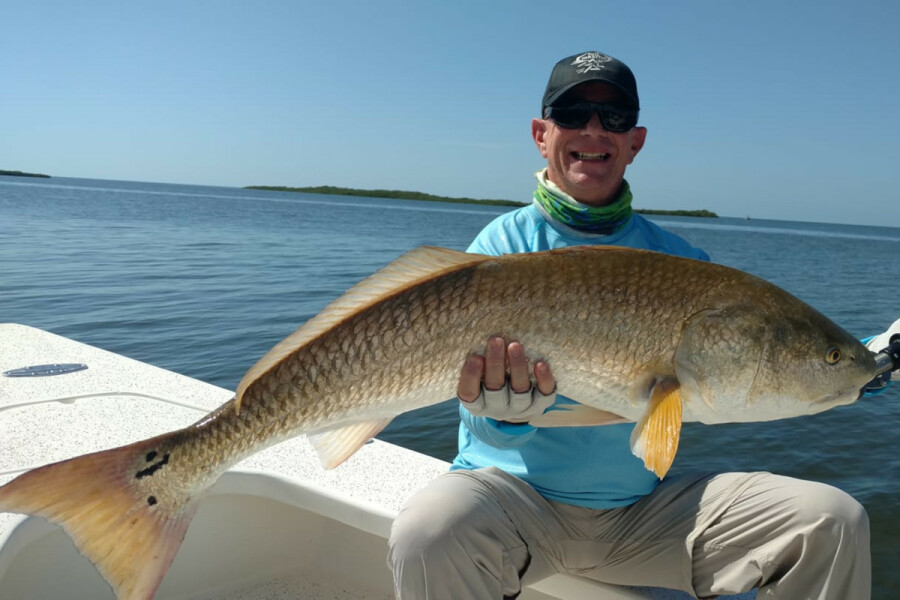
Florida Gulf Coast Summer Redfish Fishing Techniques
Summer Redfish Fishing Techniques for Florida's Gulf Coast: A Captain's Complete Guide
As summer comes in full swing, I've found the best biting fish that can handle the heat inshore is redfish. After decades of guiding on Florida's Gulf Coast, I can tell you that redfish are one of the most reliable species when water temperatures soar into the upper 80s and 90s. These copper-colored fighters adapt to summer heat better than most inshore species, making them the go-to target for consistent action during the dog days.
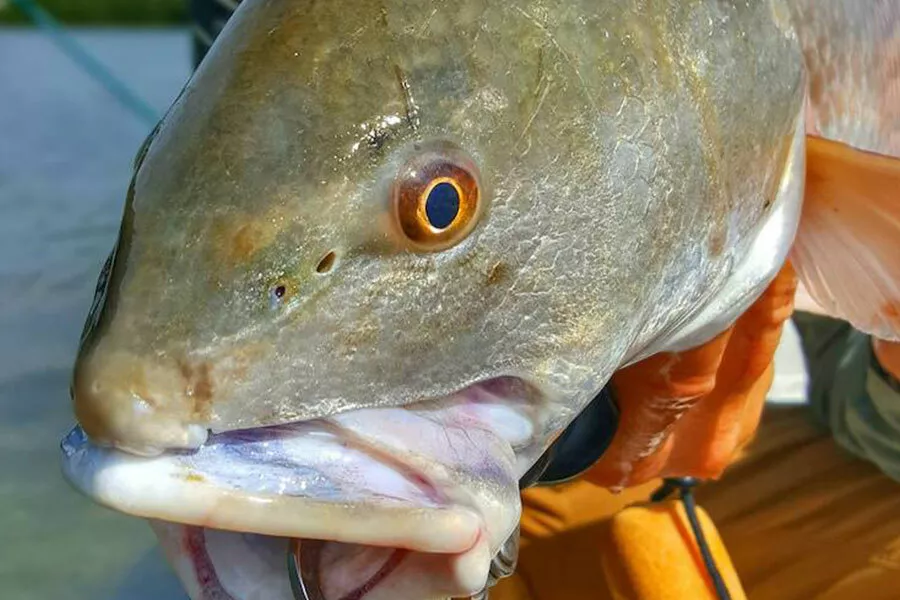
Backcountry Summer Strategies: Working Points and Rocky Structure
To find redfish in the backcountry, I like to work points and rocky shorelines with a gold spoon. There's something about gold that consistently outperforms silver in our Gulf Coast waters - tournament pros have proven this time and again. With a gold spoon, you can cover so much shoreline without anchoring and throwing live bait, but if I do have a client hook up, I will stop the boat to see if more fish are holding on that spot.
The key to summer backcountry fishing is understanding how redfish behavior changes with rising water temperatures:
- Target thermal relief areas like mangrove shade lines and deeper pockets where redfish escape 85°F+ water
- Work structure systematically - points, washouts, and creek mouths that provide cooler water circulation
- Focus on early morning windows from dawn to 10 AM when water temperatures are most comfortable
- Slow your retrieve significantly as heat-stressed redfish won't chase fast-moving baits like they do in spring
Sometimes you will get lucky and find a school of hungry reds, but most of the time it's singles and doubles when fishing the backcountry. During summer, these fish are more spread out as they seek individual comfort zones rather than forming tight groups. The exception comes in late August through September when spawning activity triggers schooling behavior that'll have you thinking you've hit the jackpot.
Outside Keys Techniques: Live Bait Strategies for Bigger Fish
On the outside, I switch up the method from artificial to live bait. The deeper water and stronger currents around the outside keys create different opportunities, especially for those larger redfish that many anglers dream about. Here's where understanding summer bait dynamics becomes crucial for success.
I don't use a lot of shrimp during the summer for redfish because so many pinfish will take your bait before a redfish finds it. This is a lesson I learned the hard way after countless trips watching clients get frustrated with constant bait thieves. Summer bait selection requires thinking bigger and more durable.
I like to use live or cut pinfish for bait, but cut mullet, ladyfish, and lizard fish work very well also. The effectiveness of cut bait actually increases during summer heat when redfish become less aggressive toward live presentations.
Here's my proven summer bait hierarchy:
- Live pinfish and whitebait for the most natural presentation around structure
- Cut mullet and threadfin herring for bottom presentations under heavy mangrove cover
- Large live shrimp (hook through the horn) when targeting specific holes and pockets
- Fresh-cut ladyfish strips for maximum scent dispersion in warm water
Bait preservation becomes critical during summer months. I always recommend insulated live wells with recirculating pumps and avoid using chlorinated tap water ice. In this heat, bait quality deteriorates rapidly, and dead or sluggish bait won't produce when redfish are already being selective.
Reading the Water: Finding Summer Redfish Schools
To locate fish on the outside, I like to look for big schools of mullet or dolphins working a shoreline. This is where years of experience really pays off - understanding how baitfish behavior changes during summer heat gives you a massive advantage. Dolphins are generally after mullet, and the redfish are mixed in with the mullet, creating these incredible feeding opportunities that can make or break your day.
The science behind this is fascinating - summer water temperatures above 85°F create specific feeding windows when predators and prey interact. During peak heat, mullet schools concentrate in areas with better water circulation, and redfish follow. After they're done feeding, I've poled in and found good bunches of redfish bunched up under the mangroves.
Key summer indicators that signal redfish activity:
- Mullet schools working shorelines during early morning and evening hours
- Bird activity over bait schools, especially during tidal changes
- Nervous water in deeper potholes and channels during midday heat
- Subtle surface disturbances along mangrove edges where fish are seeking shade
Tidal Timing: The Summer Advantage
One thing in common fishing for redfish in the backcountry or outside keys - incoming tide is best. This becomes even more critical during summer months when redfish desperately need any water circulation for cooling relief. Incoming tides push cooler, more oxygenated water onto the flats and around structure where redfish are holding.
Summer tidal strategies that consistently produce:
- Target the first two hours of incoming tide for peak feeding activity
- Focus on tide changes during optimal temperature windows (dawn and dusk)
- Work deeper water during slack tides when surface temperatures peak
- Follow moving water as it provides the thermal relief redfish crave
Incoming high tide this weekend will be midday - normally not ideal timing, but summer fishing requires adapting to whatever nature gives you. During midday high tides, I concentrate on deeper mangrove cuts and channels where the cooler incoming water provides maximum relief from surface heat.
Advanced Summer Techniques: Heat Management and Presentation
Summer redfish fishing demands completely different approaches than spring and fall seasons. Water temperatures reaching 90°F in recent years require strict adherence to depth and shade strategies. Here's what two decades of summer guiding has taught me about adapting to extreme conditions.
Equipment adjustments for summer success:
- Downsize lures to 3-4 inch profiles that match stressed baitfish behavior
- Extend leader length to 3-4 feet as redfish become more cautious in clear, hot water
- Use circle hooks for both conservation and improved hook-setting when fish are less aggressive
- Carry extra ice - approximately 1 kg ice per 4 kg fish for proper preservation
The metabolic effects of warm water create more frequent but shorter feeding periods. I've learned to recognize the signs of heat stress in both fish and anglers. When water temperatures exceed 85°F, redfish concentrate around any available structure that provides thermal relief - bridge pilings, deep mangrove cuts, rock formations, and washouts extending into grass flats.
Presentation modifications that separate successful summer anglers:
- Slow retrieves dramatically - heat-stressed redfish won't chase fast-moving baits
- Fish bottom presentations using heavier jigs to maintain contact in the strike zone
- Target shade lines and structure that provides cooling relief during peak heat
Regional Summer Hotspots: Beyond the Big Bend
While the Big Bend region from Homosassa to Crystal River offers my home waters, summer redfish opportunities extend throughout Florida's Gulf Coast. Each region provides distinct advantages during the challenging summer months.
Tampa Bay represents the state's most accessible and diverse redfish fishery, with over 200 square miles of fishable water. The Skyway Bridge area and Weedon Island Preserve create mixing zones where Gulf and Bay waters concentrate baitfish. Professional guides consistently report 10-20 redfish per trip during normal summer conditions here.
Charlotte Harbor, Florida's second-largest natural estuary, offers year-round redfish populations with peak summer action on grass flats and mangrove shorelines. The harbor's size provides numerous retreat areas where redfish find cooler water during peak heat periods.
Conservation and Regulations: Protecting Summer Stocks
Florida's redfish management divides the state into nine regions with varying bag limits designed to protect local populations. Gulf Coast regions operate under an 18-27 inch slot limit with 1-4 fish vessel limits depending on location. High vessel limit regions include the Panhandle and Big Bend areas, while lower limits cover Tampa Bay through Southwest Florida. Learn about redfish regulations by state.
Summer conservation practices become even more critical:
- Expedite fish handling during hot weather to reduce stress mortality
- Use proper icing techniques immediately after harvest
- Practice selective harvest - release trophy-class breeding fish
- Monitor water quality conditions and avoid fishing during red tide events
Current Conditions and Future Outlook
Summer fishing will see water temperatures reaching 90°F throughout the Gulf Coast, requiring strict adherence to thermal management strategies. Professional guides typically report exceptional fishing during optimal conditions, when tidal and weather windows align perfectly.
Water quality monitoring shows varying conditions across the coast. Recent red tide activity in Sarasota and Charlotte counties requires checking current FWC reports before planning trips. Blue-green algae blooms in Lake Okeechobee can impact Southwest Florida fishing during peak summer periods.
The climate reality of Florida's summers continues intensifying, making thermal relief strategies even more critical for consistent success. However, redfish populations remain robust throughout the Gulf Coast, and those willing to adapt their techniques to summer conditions will find some of the year's most rewarding fishing.
Login
to leave a review.
User Reviews
There are no reviews yet.Complete Dredge Pulley Setup Guide
Saltwater
12.28.2020
High Speed Wahoo Trolling Rig
Saltwater
09.07.2018
Best Bait for Wahoo
Saltwater
12.30.2023
Pinfish - A Comprehensive Guide
Saltwater
11.10.2023
0

